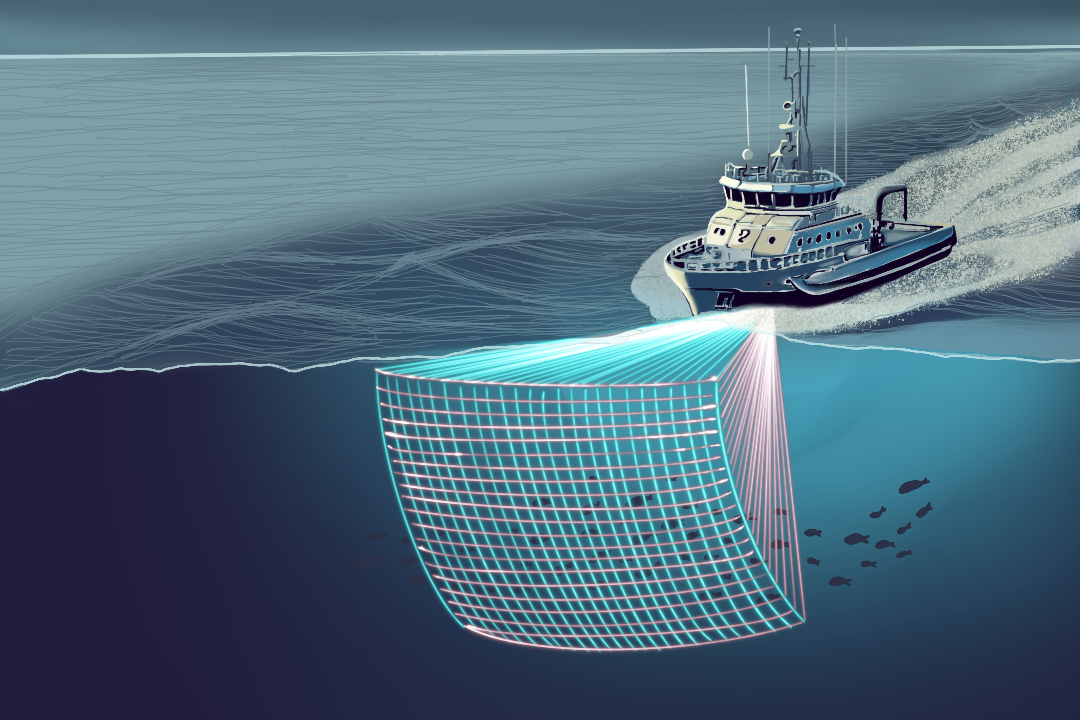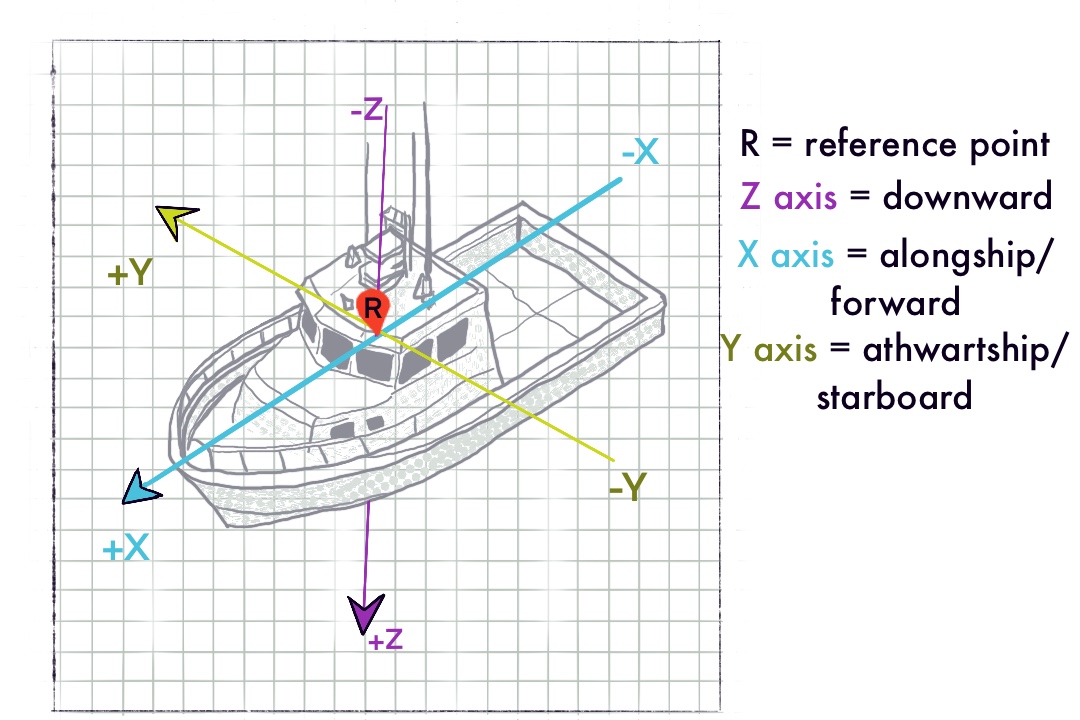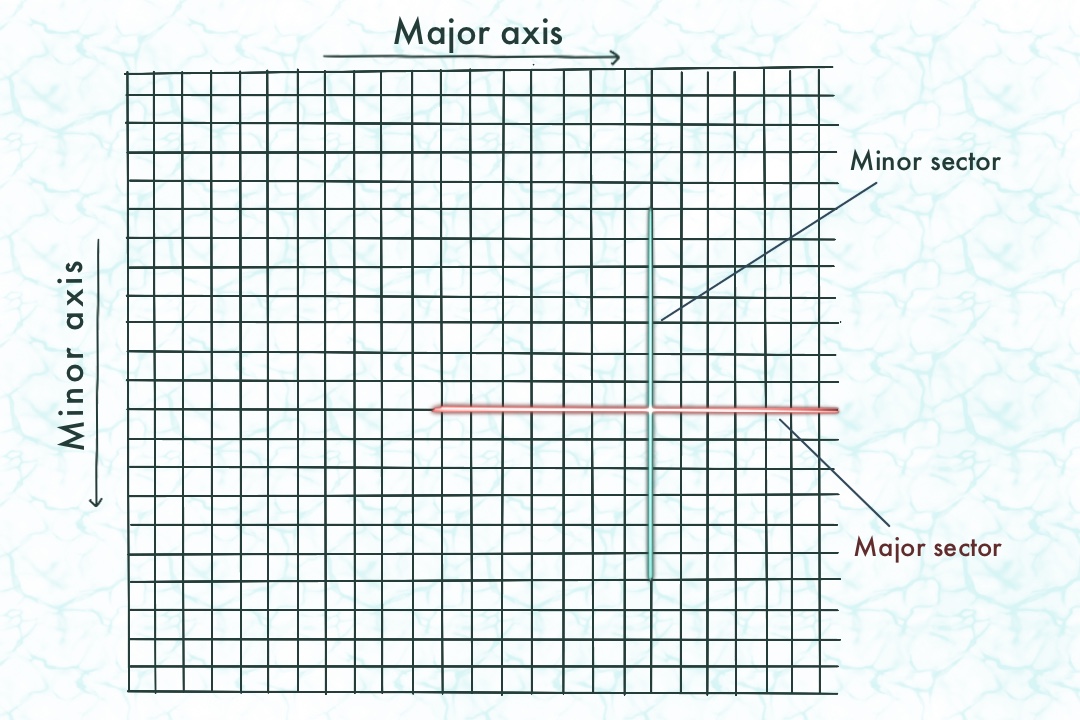About matrix data
Matrix data are high resolution acoustic data in the form of a matrix that vary in both alongship (vertical) and athwartship (horizontal) axes. Simrad MS70 echosounders provides a 3D acoustic matrix of 25 horizontal and 20 vertical beams (500 beams in total).

An array of beams extends from a transducer, typically pointing ahead and horizontally from the ship's bow. This array, or grid, has two axes, which Simrad refer to as alongship (vertical) and athwartship (horizontal) axes. The alongship axis is comprised of 20 beams, and the athwartship, 25 beams. Each beam is mapped by a coordinate of numbers, or indices. Each of these indices implies a specific orientation, or pointing vector, which Simrad refers to as steering angles as they 'steer the beams'. See the Simrad MS70 Documentation for more information.
Each beam has what Simrad refer to as a tilt and a bearing. Tilt refers to the vertical (alongship) angle from the first beam, or 'reference beam'. Bearing refers to the port/starboard (athwartship) angle extending from the reference beam. In Echoview, we refer to tilt and bearing as minor and major angles, respectively, and the reference beam as the z-axis.

Given that the athwartship line beams are odd in number (25), there is a center beam, and they spread left to right (athwartship) in symmetry. The alongship beams vary from 0° to 45°, with the 0° beam the z-axis. The alongship fan has an edge beam as its reference and the beams spread from the z-axis to an elevation of 45°.
What is affected by matrix data?
A single, horizontal row of 25 beams from the array have the same alongship/tilt/minor angle. However, when you view those beams in isolation, Echoview refers to them as a major sector plot that can be viewed in an echogram. Conversely, a single vertical slice of all the 20 beams within that slice have the same athwartship/bearing/major angle. In isolation, they are refered to as the minor sector plot as the beams all have a beam angle along the minor axis.

Echoview can derive raw matrix variables for the water column data (including Sv pings matrix formed beams, TS pings matrix formed beams, angular position pings matrix formed beams and unspecified dB pings matrix formed beams); however, the derived matrix variables require further processing in order to yield data that can be both visualized and analyzed.
In Echoview, raw matrix variables are displayed as a general summary table by double-clicking the variable icon in the Dataflow window view. To select a sector in Echoview, use the Sector select operator. It extracts a row or column of beams which Echoview presents as a standard sector plot or multibeam echogram. The direction (major or minor axes) and the angle (within the range of -45° to 0° minor angles and -30° to 30° major angles) are specified by the user. Sector select will round the specified angle to the closest sector (along the chosen axis) for that ping. The output is multibeam ping data which support the full suite of multibeam functionality in Echoview.
The role of the operator, Maximum Intensity - Matrix, sweeps across all sectors in a given axis (major or minor) which produces a sector that contains the maximum value encountered at each sample in each beam. The geometry of the output is a sector in the position of the center of the sectors in the matrix along a given axis. For example, if there are five sectors along the major axis and the user selects maximum intensity along the major axis, the output will have the geometry of major-axis Sector 2. Alternatively, if there are four sectors, it would have the geometry of major-axis Sector 1.5, which is halfway between Sectors 1 and 2. As with Sector select, the output is multibeam ping data which can be viewed in a multibeam echogram.
Other operators that support matrix variables include Calibration subset, Ping subset, Transect subset and the Copy operator.
Matrix variables data can be viewed as a table and exported as a CSV file which is subject to the same exclusions and thresholding as single beam and multibeam CSV exports. Note that table headings are different for raw and derived matrix variables. See Exporting matrix data for more information.
See also
Calibration settings for Simrad MS70 data
New for Simrad users
Operator licensing in Echoview
Raw variables derived from Simrad data files
Simrad MS70 data files